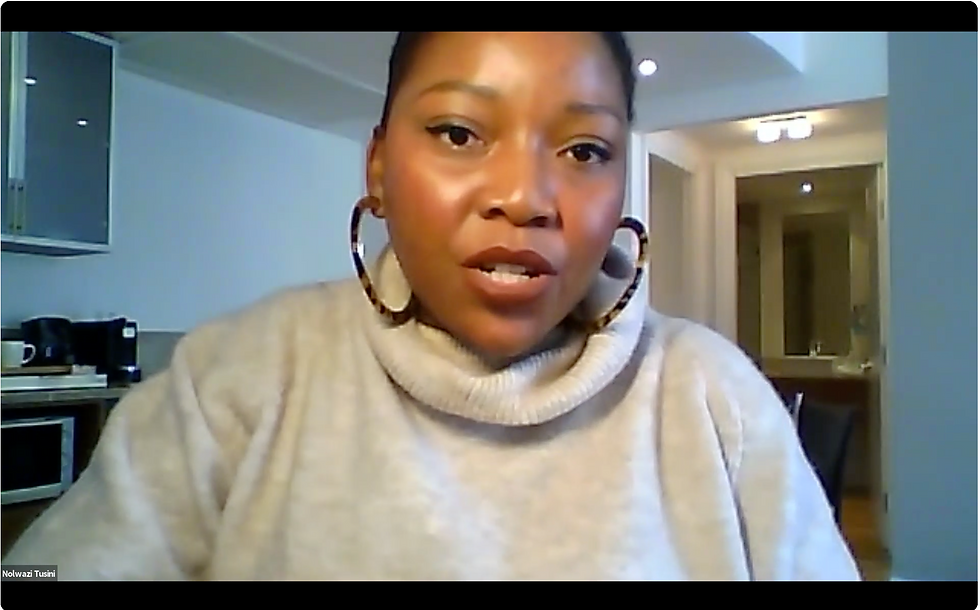Media need to portray women in their fullness
- frayintermedia

- Jun 1, 2021
- 2 min read
When journalists create stories, they need to portray their subjects in their entirety rather than disaggregated identities to successfully shift societal perceptions.
This is a key lesson content producer Nolwazi Tusini learnt while researching and writing for the “It’s a Feminist Thing” talk show. The South African TV programme was unapologetically feminist and engaged with issues such as patriarchy and gender-based violence.

“Putting a media product together, you have to understand the full human being you want to talk to, not disaggregate them because of the audience, but you also need to get to the point where you put the human being back together in order to shift societal perceptions in the ways in which you're wanting to do so,” Tusini said.
Tusini spoke at a Soul City Institute For Social Justice gender sensitivity workshop facilitated by fraycollege of Communications held on May 27. The workshop was targeted at African journalists and sought to shift attitudes and change behaviour about gender through reporting.

Stories about women don’t follow a single narrative, which is something the media struggles to understand, said TV director Matshepo Maja.
“There's a whole dynamic of female stories. And it's not just black female stories, but issues that affect women on a day to day basis and how we can bring those to light and how we educate society,” Maja said.
Maja has directed public service announcements including “Go Yala” that addresses the double standards women face when entering a marriage. With “Joggers”, Majala said she wanted to highlight the uneasy feelings and safety precautions women often have to take when going out for a run.
“And it's not even about what I look like or how I dress anymore when I go in public and when I want to go and exercise,” Maja said.
Tusini said the team working on the “It’s a Feminist Thing” wanted to centre women and their experiences, particularly that of black women and African feminism.
“But we left out the queer community,” Tusini said, noting a limited number of queer people on the team. As a result, there was an entire community that was invisible in the ways the team decided to present their content.
Majala said it is important for the industry to remember that it is not only about the stories told but who tells those stories.
“It's really important to push those stories forward, but also important to create the space for women and more women to occupy the space in storytelling and especially behind the scenes,” Maja said.





Comments